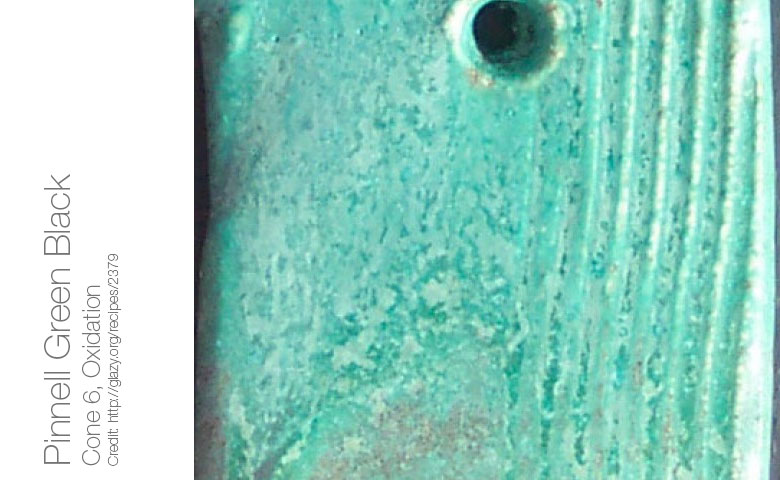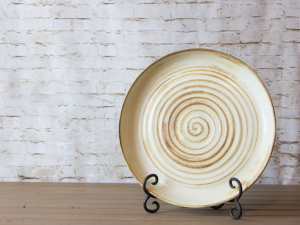Source/Alternate names: Clay Times
Firing Notes: cool maximum rate to 1472F (800C) hold 1 hour
Notes: Alisa Clausen: used Johnson Matthey J frit instead of 3134, local kaolin instead of Grolleg. Applied thick. A semi mat with movement in the surface. The glaze looks similar to the original Weathered Bronze where thinnest, but with a better melt and therefore slightly more gloss. However, where thickest, this is the brightest of greens of all of the Pinnell new formulations of Weathered Bronze. It is a strong aqua to grass green, with movement in the surface, showing some minute whitish streaking. It is black and green where thinnest. John Hesselberth has tested this glaze for copper leaching and recommends this glaze for decorative use only.
3% copper + 5 % Ti = more green
5% copper + 5% Ti = more black
Variation on Pete Pinnell’s Weathered Bronze. Black crystals, breaks black over
edges and texture. A bit more matte. See Clay Times Mar/Apr. 2004 for article p.19.
| Material | Amount | Batch | Subtotal |
|---|---|---|---|
| Nepheline Syenite | 29.3 | 146.50 | 146.50 |
| Spodumene | 27.2 | 136.00 | 282.50 |
| Strontium Carbonate | 17.8 | 89.00 | 371.50 |
| Grolleg Kaolin | 12 | 60.00 | 431.50 |
| Silica | 8 | 40.00 | 471.50 |
| Frit 3134 | 4.3 | 21.50 | 493.00 |
| Lithium Carbonate | 1.4 | 7.00 | 500.00 |
| Total Base: | 100 | ||
| Copper Carbonate | 5 | 25.00 | 525.00 |
| Titanium Dioxide | 5 | 25.00 | 550.00 |
| Total: | 110 |




